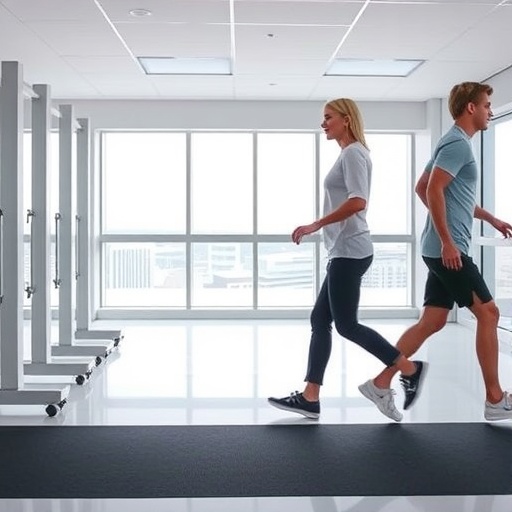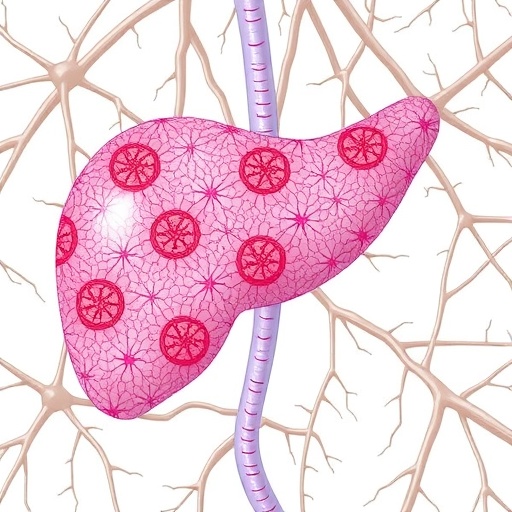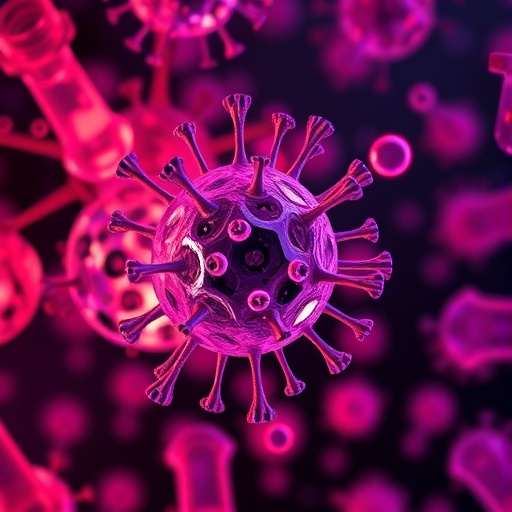
Stroke remains a formidable global health challenge, ranking as one of the top causes of long-term disability. Among its most devastating aftermaths is the impairment of gait, which severely compromises mobility and independence for the vast majority of stroke survivors. Over 80% of individuals who suffer a stroke experience some form of walking difficulty, hindering their ability to engage in everyday activities and social participation. The persistence of these deficits, particularly reduced walking speed and impaired coordination, continues to limit rehabilitation outcomes long after the acute phase.
Despite numerous physical rehabilitation modalities currently employed, including therapist-guided walking exercises and treadmill training, fully restoring efficient ambulation in chronic stroke patients remains elusive. Conventional therapies often result in partial recovery, leaving patients with lingering gait inefficiencies that restrict their broader functional mobility. Against this clinical backdrop, emerging neuromodulation techniques have garnered considerable interest for their potential to modulate neuroplasticity and enhance motor recovery in neurologically impaired populations.
In a groundbreaking development, researchers at Juntendo University in Japan have introduced an innovative therapeutic paradigm named FAST walk, designed to synergistically stimulate the spinal cord and hip musculature in alignment with the patient’s own muscle activity. Spearheaded by Professor Toshiyuki Fujiwara and Dr. Mami Tani, this electromyography (EMG)-triggered system represents a novel, closed-loop approach to gait rehabilitation. By harnessing real-time biofeedback to time electrical stimulation precisely during locomotor phases, the intervention targets the neurophysiological substrates governing walking coordination.
.adsslot_UTMcIBuVHk{width:728px !important;height:90px !important;}
@media(max-width:1199px){ .adsslot_UTMcIBuVHk{width:468px !important;height:60px !important;}
}
@media(max-width:767px){ .adsslot_UTMcIBuVHk{width:320px !important;height:50px !important;}
}
ADVERTISEMENT
Central to the FAST walk methodology is the use of transcutaneous spinal cord stimulation synchronized with hip extensor muscle activation. This dual-site stimulation paradigm capitalizes on the underlying spinal neural circuits that orchestrate gait, aiming to enhance their excitability and functional connectivity. One key reflex highlighted is the crossed extensor reflex, which plays a pivotal role in lower limb coordination during walking. Facilitating such reflex pathways may contribute to smoother, more efficient gait patterns and improved walking speed.
To empirically evaluate this approach, the team conducted a randomized controlled trial enrolling patients with chronic stroke-related gait impairments. Participants were allocated into three intervention arms: the novel FAST walk combined stimulation group, a spinal stimulation-only group, and a traditional treadmill training group. Over a period of five weeks, subjects underwent two sessions per week, aligning with Japan’s healthcare policy limitations on rehabilitative treatment duration. This study design allowed for the assessment of FAST walk’s efficacy within realistic clinical constraints.
Results from the trial were promising. All intervention groups exhibited improvements in walking speed surpassing the minimal clinically important difference benchmark of 0.15 meters per second. The FAST walk cohort demonstrated an increase from 0.55 m/s to 0.70 m/s, while the spinal stimulation and treadmill groups improved from 0.90 m/s to 1.16 m/s and 1.09 m/s respectively. Crucially, only the FAST walk group’s within-group improvement reached statistical significance, suggesting that the combined targeted stimulation confers superior benefits compared to isolated approaches.
The researchers also explored changes in spinal reciprocal inhibition (RI) as an indicator of neural plasticity and inhibitory control modulation. However, no significant alterations in RI were detected post-intervention. This finding is thought to stem from methodological limitations, including the measurement of RI at rest rather than during dynamic gait phases where neural inhibition is expected to fluctuate. Additionally, the use of orthotic devices by some participants may have impaired voluntary ankle movements, potentially diminishing measurable changes in RI.
Notwithstanding these limitations, the trial underscores the viability of FAST walk as a safe and feasible therapeutic tool to enhance gait recovery. The observed functional improvements within a relatively short and regulated treatment schedule underscore the clinical relevance and potential scalability of this technique. Professor Fujiwara envisions FAST walk as a transformative modality that could revolutionize rehabilitation outcomes for patients with chronic stroke, a group traditionally regarded as challenging to treat with standard therapy.
Looking forward, the authors emphasize the necessity of expanded investigations to validate and optimize FAST walk. Larger cohorts and prolonged follow-up assessments will be essential to ascertain the durability and generalizability of the benefits observed. Furthermore, incorporating real-time gait kinematics and spasticity evaluations during dynamic movement could refine stimulation protocols and individualize therapy. The specific contribution of hip extensor stimulation independent of spinal cord input also warrants dedicated inquiry to clarify mechanistic underpinnings.
The integration of non-invasive neuromodulation technology like FAST walk marks a significant leap in post-stroke rehabilitation science. By leveraging electrophysiological signatures to drive phase-specific spinal and muscular stimulation, this approach exemplifies a sophisticated bioelectronic medicine strategy. If further validated, FAST walk could complement and potentially surpass conventional physical rehabilitation regimes, offering renewed hope for restoring ambulation and functional independence in stroke survivors.
This innovation aligns with a broader trend toward precision rehabilitation interventions tailored to the neurophysiological state of individual patients. The ability to modulate spinal circuit excitability and reflex responsiveness in synchrony with voluntary muscle activity could facilitate more naturalistic and effective motor relearning. Ultimately, these advances may pave the way for new standards in chronic stroke care, integrating neuroengineering principles to surmount previously intractable functional deficits.
To summarize, FAST walk presents a compelling new avenue for enhancing gait recovery after stroke, combining EMG-triggered dual-site electrical stimulation to potentiate spinal and hip motor circuits. Early clinical data support its safety, feasibility, and potential superiority over single-site or traditional training modalities within limited rehabilitation durations. While further research is required, this approach represents a critical step toward translating neurotechnological innovations into tangible improvements in the lives of millions affected by stroke-induced gait dysfunction.
Subject of Research: People
Article Title: Electromyography (EMG)‑triggered transcutaneous spinal cord and hip stimulation for gait rehabilitation in persons with chronic stroke: a randomized, controlled trial
News Publication Date: 7-Jul-2025
Web References: https://jneuroengrehab.biomedcentral.com/articles/10.1186/s12984-025-01690-0, https://doi.org/10.1186/s12984-025-01690-0
References:
Tani M, Yamaguchi T, Honaga K, Takahashi Y, Kono H, Murakami Y, Isayama R, Haruyama K, Fujino Y, Matsuda T, Fukunaga I, Hori M, Tanuma A, Wada F, Hatori K, Fujiwara T. Electromyography (EMG)‑triggered transcutaneous spinal cord and hip stimulation for gait rehabilitation in persons with chronic stroke: a randomized, controlled trial. Journal of NeuroEngineering and Rehabilitation. 2025;22.
Image Credits: Prof. Toshiyuki Fujiwara from Juntendo University
Tags: chronic stroke gait recoveryenhancing motor recovery post-strokeFAST walk system for stroke patientsinnovative gait training methodslong-term rehabilitation for stroke survivorsmobility challenges after strokemultidisciplinary approaches to stroke recoveryneuromodulation in stroke therapyneuroplasticity and stroke recoveryspinal cord stimulation for gait improvementstroke rehabilitation techniquestherapeutic interventions for walking difficulties





